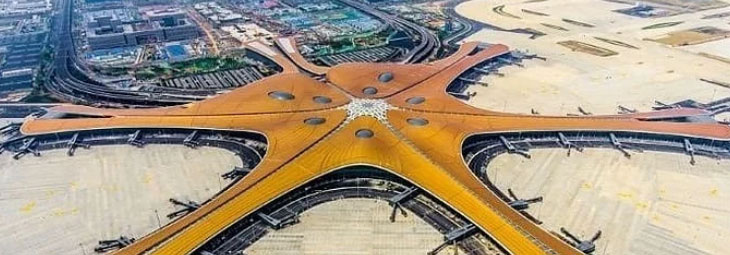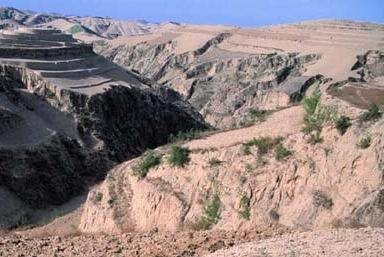

1.Climate
Most of China lies in the north temperate zone, characterized by a warm climate and distinctive seasons, a climate well suited for habitation. Most of China has a continental monsoon climate. From September to April the following year, the dry and cold winter monsoons blow from Siberia and the Mongolian Plateau, resulting in cold and dry winters and great differences between the temperatures of north and south China. From April to September, warm and humid summer monsoons blow from the seas in the east and south, resulting in overall high temperatures and plentiful rainfall, and little temperature difference between north and south China.
In terms of temperature, the nation can be sectored from south to north into equatorial, tropical, subtropical, warm-temperate, temperate, and cold-temperate zones. Precipitation gradually declines from the southeastern to the northwestern inland area, and the average annual precipitation varies greatly from place to place. In southeastern coastal areas, it reaches over 1,500 mm, while in northwestern areas, it drops to below 200 mm.
2.Topography
China′s topography was formed around the emergence of the Qinghai-Tibet Plateau, the most important geological event over the past several million years. Taking a bird′s-eye view of China, the terrain gradually descends from west to east like a staircase. Due to the collision of the Indian and Eurasian plates, the Qinghai-Tibet Plateau rose continuously to become the top of the four-step "staircase," averaging more than 4,000 m above sea level, and called "the roof of the world." Soaring 8,848 m above sea level on the plateau is Mount Qomolangma (Mount Everest), the world′s highest peak and the main peak of the Himalayas.
The second step includes the gently sloping Inner Mongolia Plateau, the Loess Plateau, the Yunnan-Guizhou Plateau, the Tarim Basin, the Junggar Basin and the Sichuan Basin, with an average elevation of between 1,000 m and 2,000 m.
The third step, dropping to 500-1,000 m in elevation, begins at a line drawn around the Greater Hinggan, Taihang, Wushan and Xuefeng mountain ranges and extends eastward to the coast of the Pacific Ocean. Here, from north to south, are the Northeast Plain, the North China Plain and the Middle-Lower Yangtze Plain. Interspersed amongst the plains are hills and foothills.
To the east, the land extends out into the ocean, in a continental shelf, the fourth step of the staircase. The water here is mostly less than 200 m deep.
2.1 Three Famous Corridors
The Hexi Corridor, located between Qilian Mountain and Beishan Mountain, is topographically a basin in the north of Gansu Province in western China. It got the name for its low topography, narrow shape and its location in the west of the Yellow River. The Hexi Corridor stretches 1,200 kilometers, including areas of mountains, Gobi and oases. The ancient Silk Road began at the magnificent capital city of Chang′an (today′s Xi′an); the route took traders westwards into Gansu Province through Lanzhou, Tianshui, Zhangye, Jiuquan along the Hexi Corridor, whose west end is Dunhuang. Out of the Hexi Corridor, the ancient Silk Road stretched into the Tarim basin, via which it finally reached Europe.
The Liaoxi Corridor, lying on the southwest of Liaoning Province in Northeast China, is a long and narrow plain along the Bohai Sea. Its width varies from two kilometers to dozen kilometers. In ancient times, it was the main land routeway connecting northeast areas and the middle and lower reaches of the Yellow River.
The Taiwan Straits, nicknamed the Sea Corridor, is an important watercourse connecting East China Sea and South China Sea. Most notably, the Penghu islands of the Straits are the strategic point of the sea route. Records have it that the famous navigator Zhenhe once relaxed on the Penghu islands on his expedition to the West Sea (present-day the South Sea, or the Southeast Asia)。
2.2 Four Major Plateaus
The four major plateaus of China are the Qinghai-Tibet Plateau, the Inner Mongolia Plateau, the Loess Plateau and the Yunnan-Guizhou Plateau.
Situated in southwest China, the Qinghai-Tibet Plateau is the largest plateau in China, covering 2.5 million square kilometers, or nearly a quarter of the national total land area. With an elevation averaging between 4,000 and 5,000 meters, it is the highest plateau on earth, and is known as the "roof of the world". The Himalayan Mountain is located in southern Qinghai-Tibet Plateau and its highest peak, Mount Qomolangma (or Mount Everest) is 8,848.13 meters above sea level. It is the highest peak in the world. Surrounded and traversed by several mountain ranges, the Qinghai-Tibet Plateau is where many of China′s major rivers originate. Boasting over 1,000 lakes, it is also a plateau with the most lakes worldwide, including the Qinghai Lake -- China′s
largest saltwater lake.
The second largest plateau in China, the Inner Mongolia Plateau, lies between 1,000 and 2,000 meters above sea level in north China. It has a gentle rolling terrain and vast grasslands, with some parts covered with uninhabited Gobi and deserts.
The Qinghai-Tibet Plateau
The Loess Plateau is surrounded by the Taihang Mountains on the west, the Qilian Mountains on the east, the Great Wall on the south and the Qinling Mountains on the north. It covers 580,000 square kilometers and lies 1,000 to 2,000 meters above sea level. Crisscrossed with ravines and gullies, it has fragmented landforms due to long-term scouring of rainfall and streams.

The Loess Plateau
Covering east Yunnan Province and most parts of Guizhou Province, the Yunnan-Guizhou Plateau has an elevation of 1,000 to 2,000 meters. It has a terrain that descends from northwest to southeast and is covered with numerous mountain ridges, valleys and rugged landforms. The famous Huangguoshu Waterfall, largest in China, is on the plateau.
2.3 Five Mountain Ranges
China is world-known for its abundance of mountains. Its mountain ranges can be divided into five basic categories according to the directions in which they run:
(1) West-to-east mountain ranges, including the Tianshan-Yinshan-Yanshan mountain system, the Kunlun-Qinling-Dabie mountain system, and the Nanling mountain system;
(2) North-to-south mountain ranges, including the Helan, Liupan, and Hengduan mountain ranges;
(3) Northeast-to-southwest mountain ranges, including the Changbai, Greater Hinggan, Taihang, and Wushan ranges;
(4) Northwest-to-southeast mountain ranges, including the Altay, Qilian and Gangdise ranges;
(5) Arc-shaped mountain ranges, including the Himalayas and Taiwan Mountains.
3.Rivers and Lakes
China abounds in rivers. More than 1,500 rivers each drain 1,000 sq km or larger areas. Most of the large rivers have their source on the Qinghai-Tibet Plateau, and drop greatly between source and mouth. As a result, China is rich in water-power resources, leading the world in hydropower potential, with reserves of 680 million kw.
China's rivers can be categorized as exterior and interior systems. The catchment area of the exterior rivers that empty into the oceans accounts for 64 percent of the country's total land area. The Yangtze, Yellow, Heilong, Pearl, Liaohe, Haihe and Huaihe rivers flow east, and empty into the Pacific Ocean. The Yarlungzangbo River in Tibet, which flows first east and then south into the Indian Ocean, boasts the Yarlungzangbo Grand Canyon, the largest canyon in the world, 504.6 km long and 6,009 m deep. The Ertix River flows north from the Xinjiang Uygur Autonomous Region to the Arctic Ocean. The catchment area of the interior rivers that flow into inland lakes or disappear into deserts or salt marshes makes up about 36 percent of China's total land area. Its 2,179 km make the Tarim River in southern Xinjiang China's longest interior river.
The Yangtze, 6,300 km long, is the largest river in China, and the third largest in the world, next only to the Nile in Africa and the Amazon in South America. Passing through high mountains and deep valleys, the upper section of the Yangtze River is abundant in water resources. Known as the "golden waterway," the Yangtze is a transportation artery linking west and east, its navigation benefiting from excellent natural channels. The middle and lower Yangtze River areas have a warm and humid climate, plentiful rainfall and fertile soil, making them important agricultural regions. The Yellow River is the second largest river in China with a length of 5,464 km. The Yellow River valley was one of the birthplaces of ancient Chinese civilization. It has lush pasturelands along its banks, flourishing agriculture and abundant mineral deposits. The Heilong River is a large river in north China with a total length of 4,350 km, of which, 3,101 km are in China. The Pearl River (Zhujiang), 2,214 km long, is a large river in south China. In addition to those bestowed by nature, China has a famous man-made river - the Grand Canal, running from Beijing in the north to Hangzhou in Zhejiang Province in the south. Work first began on the Grand Canal as early as in the fifth century A.D. It links five major rivers: the Haihe, Yellow, Huaihe, Yangtze and Qiantang. With a total length of 1,801 km, the Grand Canal is the longest as well as the oldest man-made waterway in the world.
China's territory includes numerous lakes, most of which are found on the Middle-Lower Yangtze Plain and the Qinghai-Tibet Plateau. Freshwater lakes such as Poyang, Dongting, Taihu, and Hongze mostly lie in the former area, while in the latter are saltwater lakes, such as Qinghai, Nam Co and Siling Co. Poyang Lake, in the north of Jiangxi Province and with an area of 3,583 sq km, is the largest of its kind. Qinghai Lake, in northeast Qinghai Province and with an area of 4,583 sq km, is the largest one of its kind.
From: Institute of Geographic Sciences and Natural Resources Research website
Source:<english.igsnrr.cas.cn/eocg/pgw/ce/>